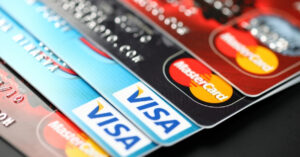The Future of Payments: The diversification of alternative payment methods
The travel payments landscape is experiencing a transformation. There is a growing trend towards fragmentation in the global payments market, with payments being spread between a number of different payment companies and methods. Alternative payments are defined payment methods that are used as an alternative to credit cards. There are hundreds of different types of alternative payment methods at this moment in time, including mobile payments, eWallets, debit cards, bank transfers, and others, which continue to grow in popularity.
However, usage varies by market. A survey in Canada found that Canadians are increasingly choosing alternative payment tools, with 73% of Canadians using tools such as mobile payments, prepaid cards or PayPal. Even pre-pandemic, alternative payments were catching up to credit cards in terms of usage. Vitally, one of the key motivators for alternative payments is the increase in the use of mobile. At this moment in time, more than six billion smartphone subscriptions are active globally. As a result, e-wallets such as Apple Pay and AliPay are increasingly dominating the alternative payments sphere as consumers search for convenient ways to pay for goods and services

In some markets, alternative payment emerged as mainstream directly because of the COVID-19 pandemic. For example, in India, mobile and digital payments have displaced traditional payment methods as citizens shopped online and worked to slow the spread of the virus in every way possible, including forgoing cash. According to a survey by GlobalData, the share of alternative payments in e-commerce transactions in India rose to 54% in 2020, which more than doubled from 25.3% in 2016. However, India isn’t the only country seeing an alternative payments transformation.
Case study: The dominance of alternative payments in China
Many countries followed a similar pattern when it came to shifts in payment methods. Most countries switched from cash to credit card payments and then onto mobile payments. China, however, skipped a step in this process. They traded cash for mobile payments, and they have not looked back. It’s not surprising that China boasts the world’s largest online population with 988 million users, with many of them accessing the internet from their mobile. The popular digital wallet Alipay now handles more than half of China’s eCommerce payments. Chinese consumers are choosing the convenience of app-based payments via mobile devices over any other payment method.
In China, QR codes are the name of the game. The QR code has redefined purchases in China. It is helping to drive the mobile payment trend that is having a large impact in the global payments landscape. Paying for goods and services via a QR code rose to popularity because it is cheaper than other payment systems. They are inexpensive to create, easily
distributed, and all that is needed to use them is a phone with a working camera. The most commonly used QR code reader is the Smart Box, and it is almost a quarter of the price of a handheld point of sale terminal.
This makes a world of difference for small businesses eager to save money
whilst still providing their customers with easy ways to pay. Alibaba and Tencent (the companies that created AliPay and WeChat, respectively) built their popular mobile payment apps on the QR code.

While alternative payments currently dominate the Chinese market, facial recognition could become the next big thing. If the technology takes off, could QR codes soon be a thing of the past in China? Only time will tell.
Alternative payment dominance grows across markets
The dominance of alternative payments systems may be most stark in China, but it is a growing phenomenon globally. The changes in the payments landscape have shown payment providers of all kinds that customer preferences are changing globally; consumers
want convenience. Established companies in all sectors are also trying to get a piece of the action: significant portions of US online transactions use payment credentials stored online with various mobile apps such as Uber, Airbnb, Starbucks, and Amazon. However, this could only happen because of open banking.
Open banking, an area of financial technology that refers to the use of open APIs that enable third-party developers to build applications and services around a financial institution, is paving the way for the creation of new alternative payment methods. When the European Parliament adopted PSD2, one of the requirements was that banks create APIs that let third parties initiate payments on behalf of consumers to give them more payment choices.
Alternative travel payments
The travel industry is experiencing a similar trend with payments to eCommerce: alternative payments are growing in popularity. Travellers are now choosing to pay for digital travel with alternative methods more often than cash and cards combined, accounting for 51% of global e-Commerce spend. Some regions are more reliant on alternative transactions, such as Asia, where 59% of payments are made with alternative payment methods. However, other regions are catching up. For example, in the EMEA region, 52% of payments are made using alternative methods.
The alternative payments trend shows no signs of stopping: the World Payments Report predicts that the total volume of non-cash payments will reach over $1 trillion by 2022. One thing is certain, the world of payments does not stand still and the diversification of the alternative payments market continues. The ecosystem is constantly changing as innovative payment technology appears and customer preferences shift.
If you’re interested in learning more about the future of payments, why not visit our blog?

4 Ways To Build A Better Payments Strategy
4 Ways To Build A Better Payments Strategy It has never been more critical to offer

Innovative Travel Berlin – Will Plummer
Innovative Travel Berlin- Will Plummer Berlin is a city that I absolutely love, and it was

Industry Event: Travolution Euopean Summit, May 2022
Travolution Euopean Summit, May 2022 I had the pleasure of attending the Travolution.com Summit last week.



